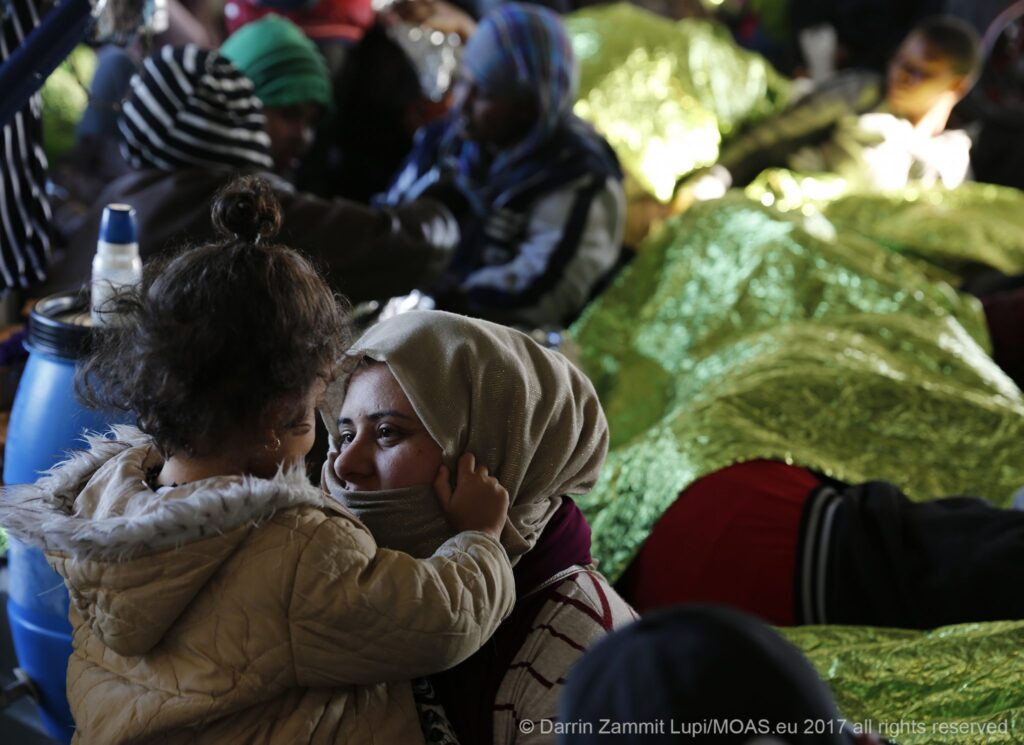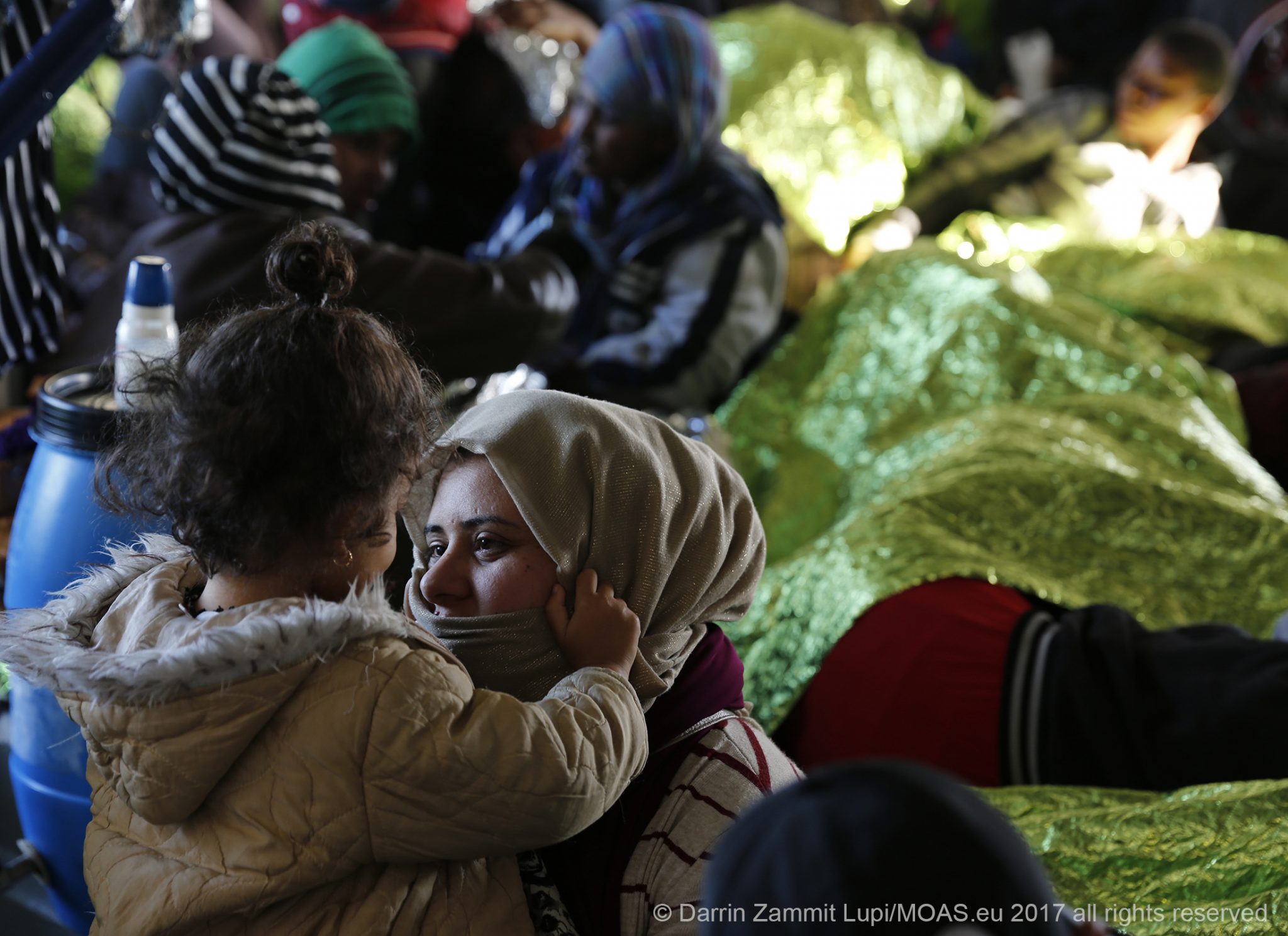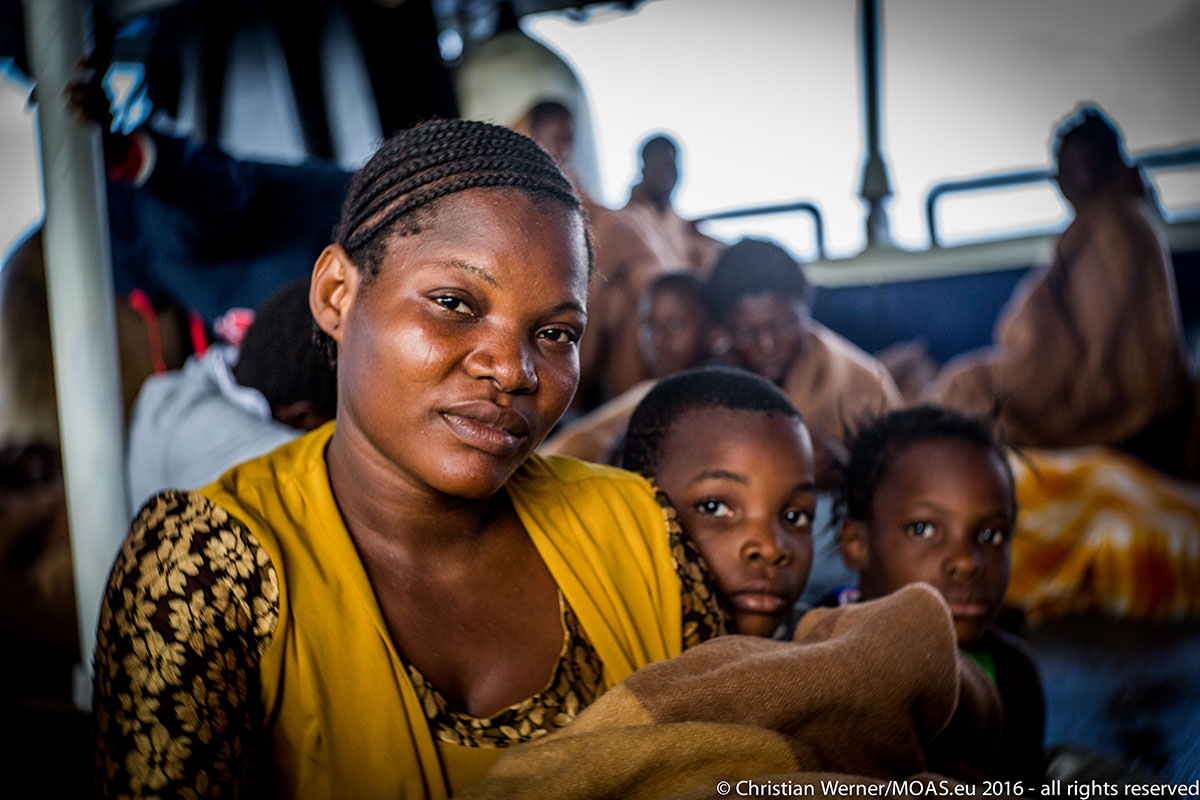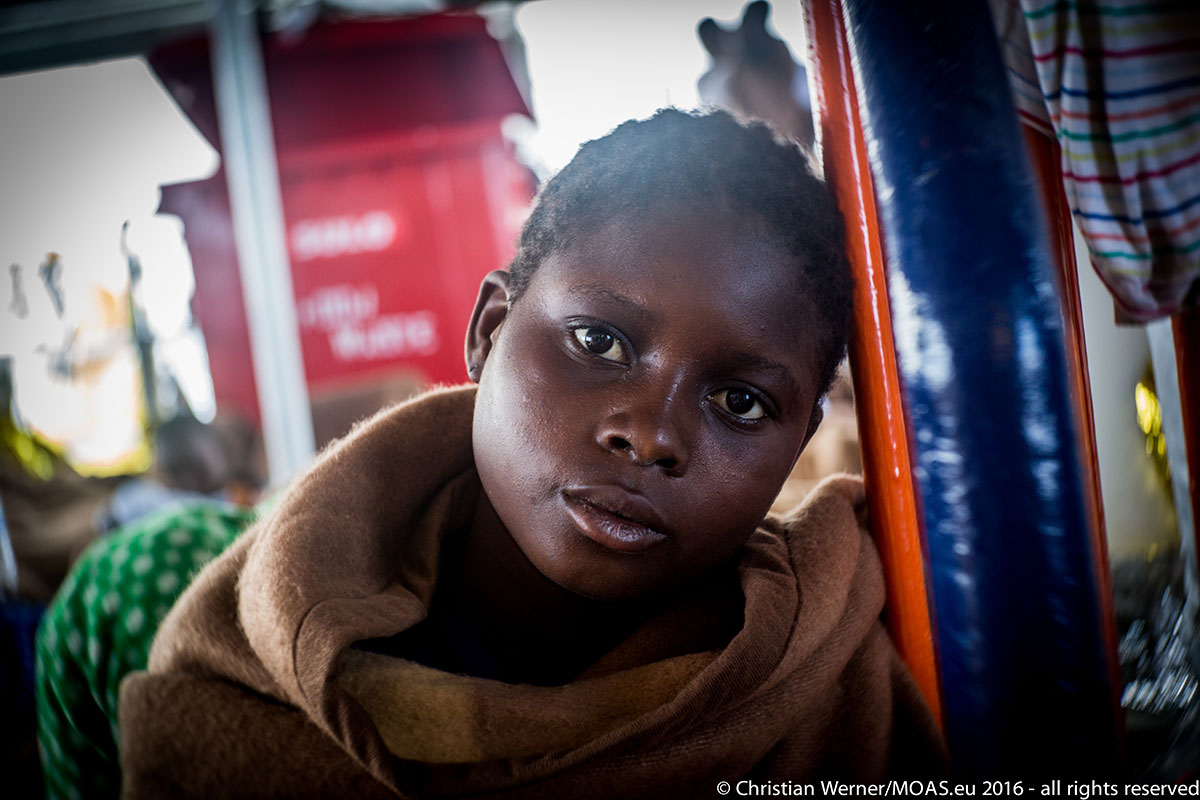Throughout our rescue missions, MOAS has assisted many women and girls who have been forced to leave their homes for reasons that are either directly or indirectly related to their gender. Here, we explore how gender interacts with forced migration, before turning to the ongoing situation in Nigeria, where many of our female beneficiaries come from.
What is gender?
Gender refers to the behaviours, activities, roles and attributes that a society perceives to be appropriate for women and men. This includes the norms, roles and relations between individuals and groups of the same and opposite sex, which are learned through socialisation from a very young age. When individuals do not ‘fit’ into the gender mould in their society at any given time, they can be humiliated, discriminated against or socially excluded. Simply belonging to a certain gender can also mean that men and women have very different experiences of the world around them.
In most societies around the world, there are differences and inequalities between men and women, which result in assigned responsibilities and activities. Women face challenges that are unique to them, and often this is due to hierarchies of power which often give men privileged access to the resources available in society.
This difference in power influences social relations between individuals, families, and society, as well as in education, law, politics and the economy. For women, it may result in unequal access to resources, reduced status in society, violence, and reduced life chances compared to men. The intersectional nature of gender with race, ethnicity, and class can result in overlapping discriminations which further exacerbate the inequalities a woman may experience in her home society and the world around her.
How does gender relate to migration?
Like all social activities, migration is gendered. Gender influences the entire migration process: it influences who moves, why they move, how they move, as well as the consequences of this movement for the individual and their families. The reasons behind women migrating are complex and multifaceted, and migration patterns in the last half century have shifted, seeing significantly more women migrating on their own: according to the UN Population Fund, women make up half of all migrants globally.
Many factors influence a woman’s options and decision to migrate. Migration can be involuntary for those living in countries experiencing war, political strife, extreme poverty, the effects of climate change, and the government’s inability to protect their citizens and their livelihoods. Loss of livelihood for a woman or a family member can also increase the likelihood of women being trafficked for sex, begging, forced labour, or for organ trafficking.
Gender and conflict-related forced displacement
For example, women and girls experience conflict differently to men due to their gender. Civilians – especially women, children, the disabled and elderly– are the primary casualties of war: 80% of casualties by small arms are women and children. Armed conflict worsens gender-based inequalities. Women and girls are especially vulnerable during conflict: they tend to be poorer, have less education and employment opportunities, and are less mobile due to their traditional and reproductive roles in society. As a consequence, women and children account for the majority of the world’s displaced.
Women and girls can also be targeted directly during conflict because of their gender. During conflict, women and girls are affected more often by physical and sexual violence. Sexual violence during conflict has now been recognised as a weapon of war. For example, following the extensive use of rape of women in the former Yugoslavia and Rwanda in the 1990s, rape and sexual slavery in conflict are now recognised as crimes against humanity. In Resolution 1820 (2008) on Women Peace and Security, the UN Security Council noted that:
Women and girls are particularly targeted by the use of sexual violence, including as a tactic of war to humiliate, dominate, instil fear in, disperse and/or forcibly relocate civilian members of a community or ethnic group.
Current examples: Nigeria
In Nigeria, seven years of conflict with terrorist group Boko Haram has caused gender-specific suffering and has changed the lives of entire communities as a result. The group’s tactics include kidnapping women and girls from their homes for diverse reasons, including marriage, reproductive capacity, suicide attacks, camp maintenance, and as bargaining chips with the Nigerian government. Men who have been fighting the insurgency have been disproportionately killed, leaving women as the majority of the 1.8 million internally displaced persons (IDPs) in the North East of the country. Women who have been associated with Boko Haram face stigma when trying to reintegrate into society, leaving them and their children at risk of further marginalisation.
Below, we briefly look at the testimonies of two women we rescued from unseaworthy boats during our 2016 Central Mediterranean Mission.
You can read about some of our female beneficiaries’ experiences of trafficking here, and make sure to catch our special Gender and Forced Migration Podcast. Our podcast on Conscription also explores how gender roles have affected young Syrian men and their experiences of conscription in the ongoing civil war.
For all the MOAS news and updates sign up to our newsletter at the bottom of this page. You can support our rescue missions by following us on social media or giving whatever you can to help us save lives at sea.
 This project has been funded with support from the European Commission. This publication reflects the views only of the author, and the Commission cannot be held responsible for any use which may be made of the information contained.
This project has been funded with support from the European Commission. This publication reflects the views only of the author, and the Commission cannot be held responsible for any use which may be made of the information contained.




